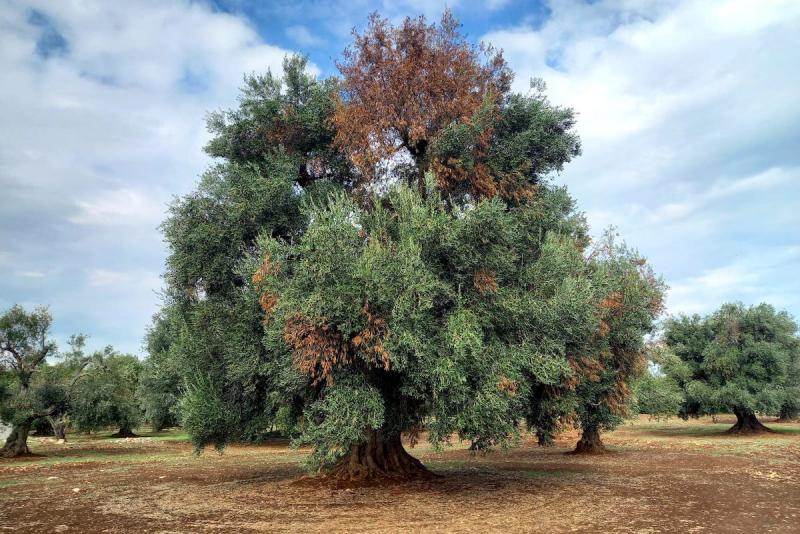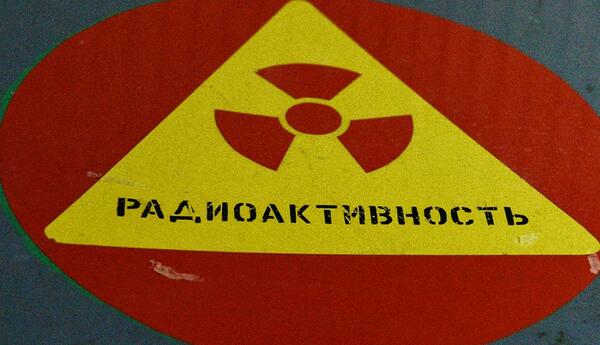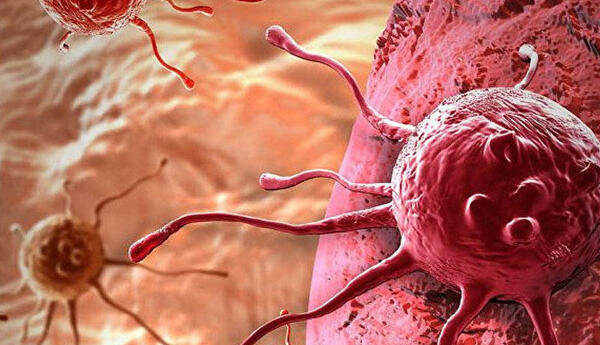Plant apocalypse: Scientists identify organisms destroying EU trees and crops
In February 2024, Puglia scientists found another Xylella subspecies, which had annihilated US vineyards and never previously been detected in Italy, SİA informs via The Guardian.
Since scientists first discovered Xylella fastidiosa in 2013 in Puglia, Italy, it has killed a third of the region’s 60 million olive trees – which once produced almost half of Italy’s olive oil – many of which were centuries old.
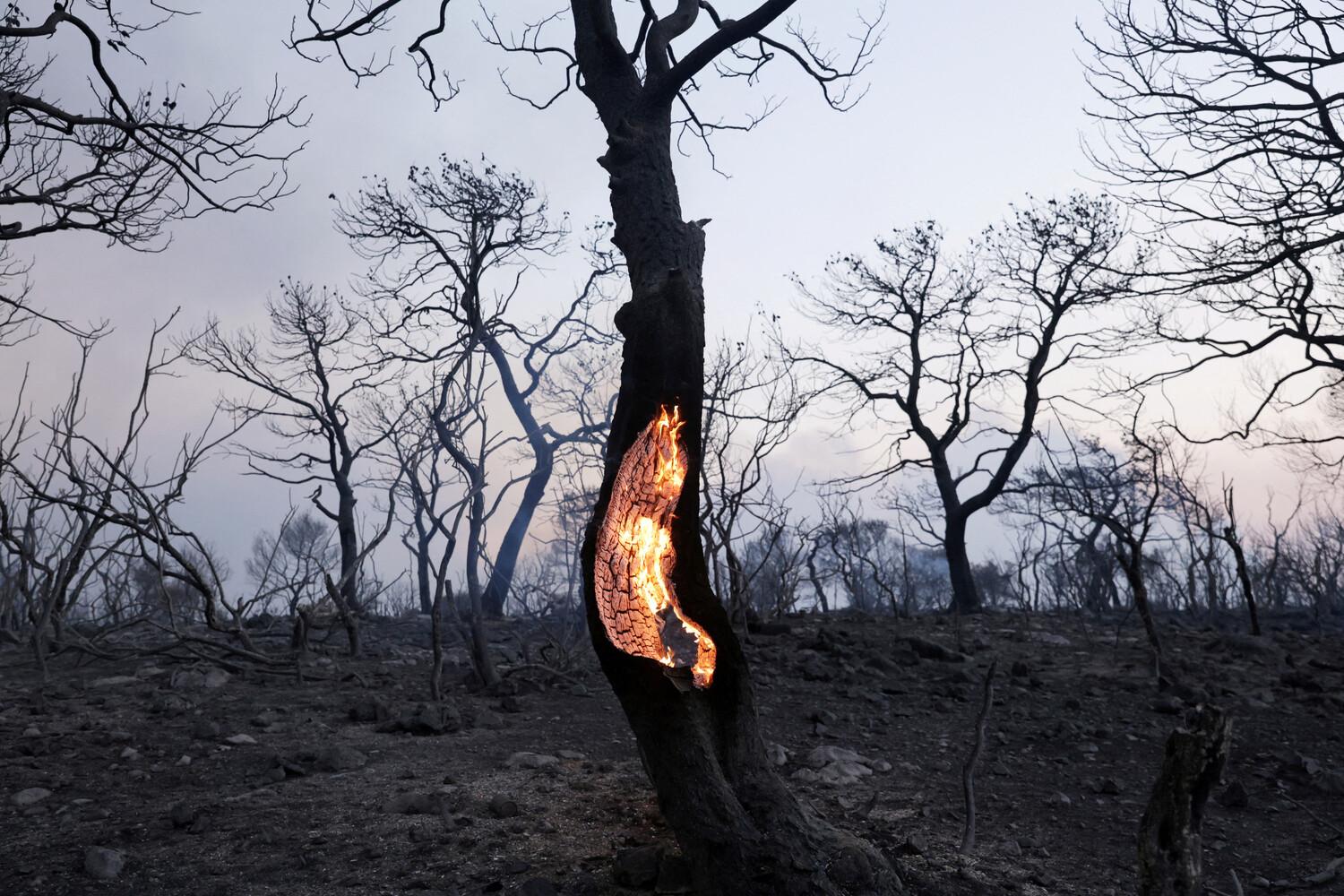 Farms stopped producing, olive mills went bankrupt and tourists avoided the area. With no known cure, the bacterium has already caused damage costing about 1 billion euros.
Farms stopped producing, olive mills went bankrupt and tourists avoided the area. With no known cure, the bacterium has already caused damage costing about 1 billion euros.
“The greatest part of the territory was completely destroyed,” says Donato Boscia, a plant virologist and head researcher on Xylella at the Institute for Sustainable Plant Protection in Bari.
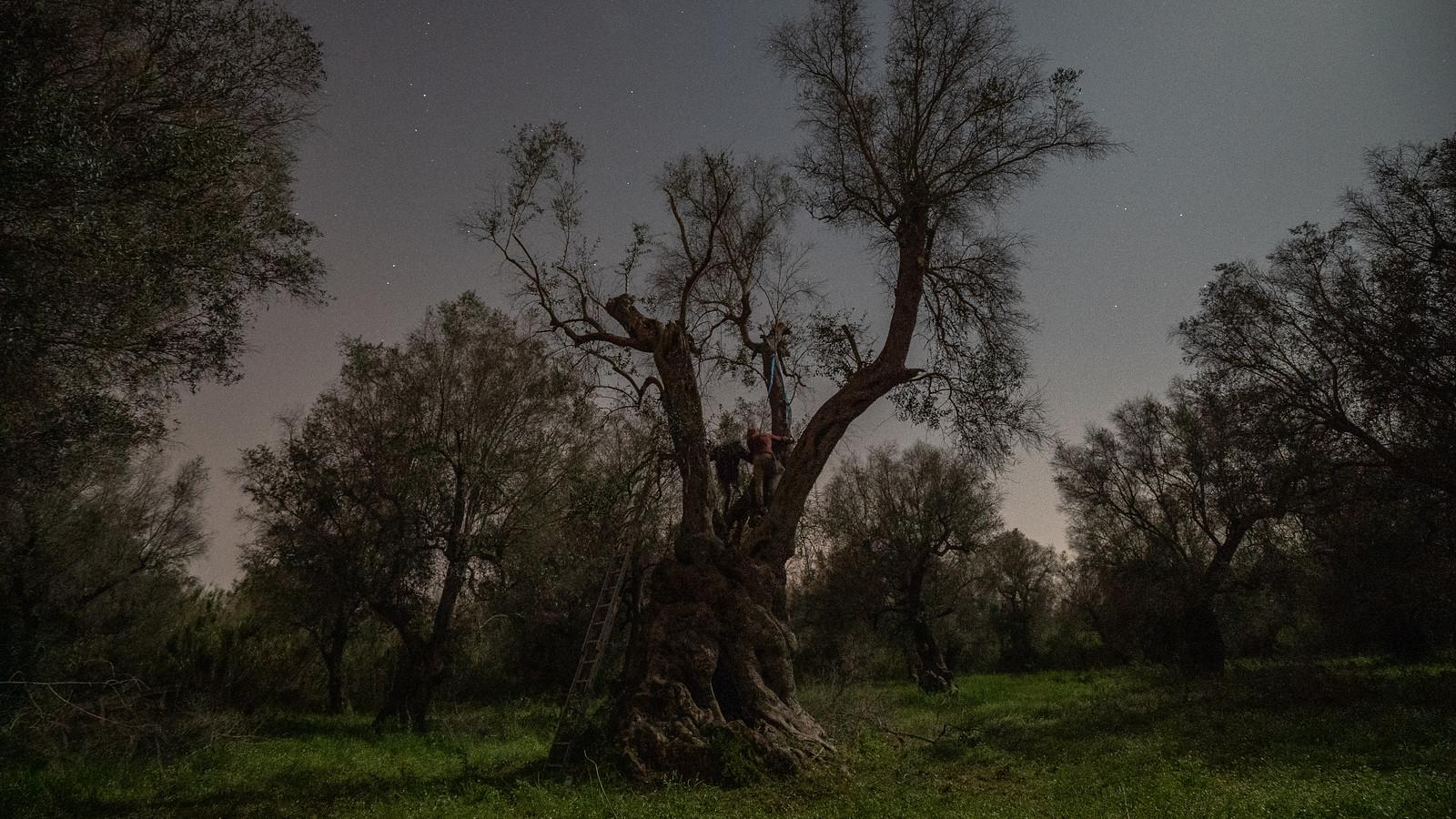 Across the EU, data shows, outbreaks of newly introduced plant disease have continued unabated at an average rate of 70 a year between 2015 and 2020, despite regulations introduced to stop their spread in 2016. While a number of member states have taken steps to prevent and curb the outbreaks, scientists, plant epidemiologists and agronomists say it is still insufficient.
Across the EU, data shows, outbreaks of newly introduced plant disease have continued unabated at an average rate of 70 a year between 2015 and 2020, despite regulations introduced to stop their spread in 2016. While a number of member states have taken steps to prevent and curb the outbreaks, scientists, plant epidemiologists and agronomists say it is still insufficient.
Evidence shows that the Xylella bacteria came from Latin America and, most likely, got a ride from ornamental coffee plants passing through the Netherlands. About 30 billion rooted and unrooted plants, cuttings, bulbs and tissues came from third countries into Europe between 2005 and 2014, mainly through Dutch ports.
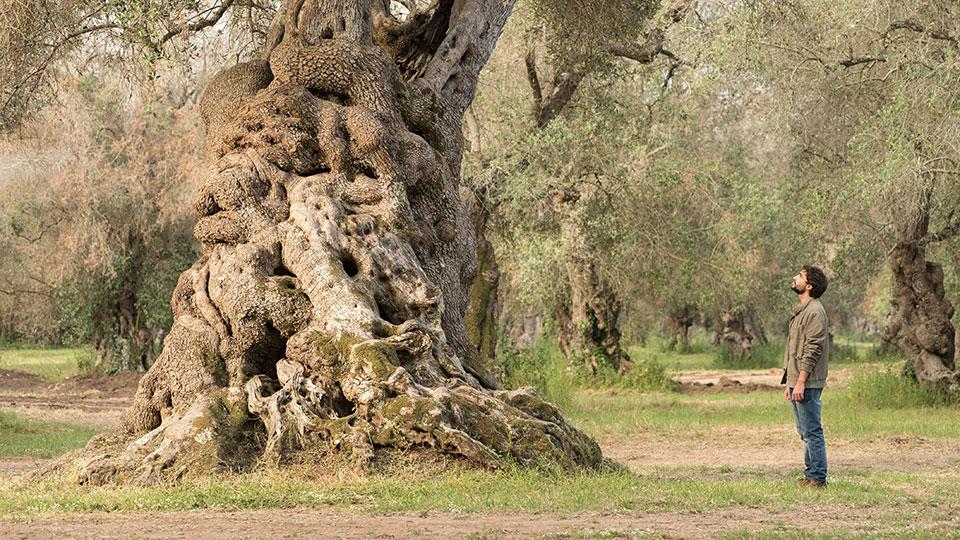 Only a sample of about 2% of imported plants are inspected for the presence of symptoms, according to international protocols, says the Netherlands Food and Consumer Product Safety Authority (NVWA). Given the number of plants that come through the main EU ports, it is “possible that new species will be introduced.”
Only a sample of about 2% of imported plants are inspected for the presence of symptoms, according to international protocols, says the Netherlands Food and Consumer Product Safety Authority (NVWA). Given the number of plants that come through the main EU ports, it is “possible that new species will be introduced.”
Experts say the problem needs to be addressed in terms of balancing costs and benefits.
Bütün xəbərlər Facebook səhifəmizdə
Other news
Latest news
US Religious Delegation Commends Azerbaijan's Interreligious Harmony
Politics 3 May 19:18Myanmar Bans Overseas Employment for Military Service Age Individuals
World 3 May 18:21Azerbaijan Hosts International Student Conference on Social and Economic Research
Education 3 May 18:18Large-scale protests supporting Palestine emerge in US from late April to early May
Politics 3 May 18:07Azerbaijani MFA responds to UK Ambassador
Politics 3 May 17:48EFES-2024 exercise ongoing
Politics 3 May 16:49Azerbaijani and Iranian generals discuss regional security issues
World 3 May 16:17Kalbajar to be supplied with water from Aghchay
Tourism 3 May 15:52Azerbaijan may consider establishing Mother's Day
Social 3 May 15:21Georgian MFA responds to France over protest rallies
World 3 May 14:53Azerbaijan weather forecast for May 4
Social 3 May 14:26Azerbaijani Foreign Minister embarks on business trip to Gambia
Politics 3 May 13:45Azerbaijan’s Zangilan to host international event on landmine problem
Politics 3 May 13:17Entry to Icherisheher to be restricted
Culture 3 May 12:50EU eyes allocating additional 2M euros to Azerbaijan for mine clearance
Social 3 May 12:24Jeff Taylor: ADB building capacity to engage in sustainable procurement
Economy 3 May 11:48Tension between Tbilisi, Washington increases, Georgian PM refuses go to US
Politics 3 May 11:11SOCAR president meets head of Ukraine’s Naftogaz
Economy 3 May 10:46US senators mull risks of Netanyahu's arrest
Politics 3 May 10:15Russian troops enter base housing US military in Niger, US official says
World 3 May 09:48Hikmat Hajiyev: UNESCO can not be turned into tool in hands of any single person
Politics 3 May 09:166th World Forum on Intercultural Dialogue wraps up in Baku
Politics 2 May 23:04Dubai Airports cancels 13 flights, delays several amid heavy rainfall
World 2 May 20:23Azerbaijan, Russia discuss current regional situation
Politics 2 May 20:14Azerbaijani FM briefs AIPA Secretary General about COP29 preparation process
Politics 2 May 20:04Heydar Aliyev Foundation’s projects in Russia discussed
Politics 2 May 19:13Azerbaijan and Australia Hold Inaugural Political Consultations
Politics 2 May 18:47Kyrgyzstan advises citizens to temporarily avoid traveling to Russia
World 2 May 18:40Bakcell congratulated Ulviyya Fataliyeva, the champion chess player
Technology 2 May 18:37Islamic Cooperation Organization to Hold Summit in Gambia on May 4-5
World 2 May 18:30Türkiye 'neutralizes' 43 more PKK/YPG terrorists in northern Iraq, Syria
World 2 May 18:05Azerbaijan weather forecast for May 3
Politics 2 May 17:10Heydar Asadov re-appointed rector of Azerbaijan State Marine Academy
Education 2 May 16:34UNDP delegation to visit Azerbaijan
Politics 2 May 16:14UN Secretary General intends to attend the COP29
World 2 May 15:38UN establishes special working group to support Azerbaijan in COP29
Politics 2 May 15:07Azerbaijan, Uzbekistan discuss deepening strategic partnership
Politics 2 May 14:50Travelers from Norway arrive in Azerbaijan’s Shusha city
Social 2 May 14:21Armenian authorities to allocate over $6M to host annual meeting of EBRD
Economy 2 May 13:44The "Create the Future with Your Own Hands" project in women's shelter
Social 2 May 13:31President Ilham Aliyev receives Special Adviser to UN Secretary-General
Politics 2 May 12:25Tank units hold intensive combat training sessions
Social 2 May 11:49Azerbaijan approves Master Plan for the Development of the City of Kalbajar by 2040
Politics 2 May 11:11Return to all liberated areas to start by end of 2024
Social 2 May 10:21Azerbaijan, Australia hold political consultations
Politics 2 May 09:38Fed leaves rates unchanged, flags 'lack of further progress' on inflation
Economy 2 May 09:09Azerbaijan, UNESCO explore prospects for cooperation
Politics 1 May 20:29Azerbaijan, Russia discuss bilateral cooperation
Politics 1 May 19:24President Ilham Aliyev received Speaker of Parliament of Iraq
Politics 1 May 19:17Ali Asadov meets with President of Senate of Malaysian Parliament
Politics 1 May 19:14Ukrainian delegation informed of mine problem in Azerbaijan’s liberated territories
Politics 1 May 18:40Kyrgyzstan cancels Immortal Regiment march on Victory Day
World 1 May 18:07Azerbaijani President: We are strongly committed to multilateralism
Social 1 May 17:46Ilham Aliyev received Speaker of Parliament of Iraq
Politics 1 May 17:38President Ilham Aliyev received Secretary General of KAICIID
Politics 1 May 17:23Ilham Aliyev received Chief Rabbi of Russia
Politics 1 May 17:03President: Now we are seeing positive trends on the peace track
Social 1 May 16:37President: Intercultural dialogue within Azerbaijan has always been very positive
Politics 1 May 14:476th World Forum on Intercultural Dialogue commenced in Baku
Culture 1 May 12:23Ukraine’s MFA welcomes agreement reached between Azerbaijan and Armenia
World 1 May 10:28State Department: US believes peace possible between Azerbaijan and Armenia
Politics 1 May 10:00Private news
Digər xəbərlərLarge-scale protests supporting Palestine emerge in US from late April to early May
Politics 3 May 18:07Armenia's Border Provocations Have Broader Goals, Says Political Analyst
Politics 16 Aprel 18:40Enhance your bedroom with these air-purifying plants
Health 16 Aprel 18:02Western interests clashing with peace efforts in South Caucasus - ANALYSIS
Politics 2 Aprel 18:02
Redactor's choice
Popular
Exchange rates
-
 USD
1,7000
USD
1,7000
 0,00%
0,00%
-
 EUR
1,8246
EUR
1,8246
 0,00%
0,00%
-
 GBP
2,1333
GBP
2,1333
 0,00%
0,00%
-
 RUB
0,0185
RUB
0,0185
 0,00%
0,00%

2008-2024. Səs İnformasiya Agentliyi, Bütün hüquqlar qorunur. Məlumatlardan istifadə etdikdə istinad mütləqdir.
İfadə olunan fikirlərə sayt məsuliyyət daşımır.
Ünvan: Ü. Hacıbəyov küçəsi, 66; Bakı, Azərbaycan.
Email: info@sia.az Tel.: (+994 12) 598-33-90; Faks: (+994 12) 493-11-62;



